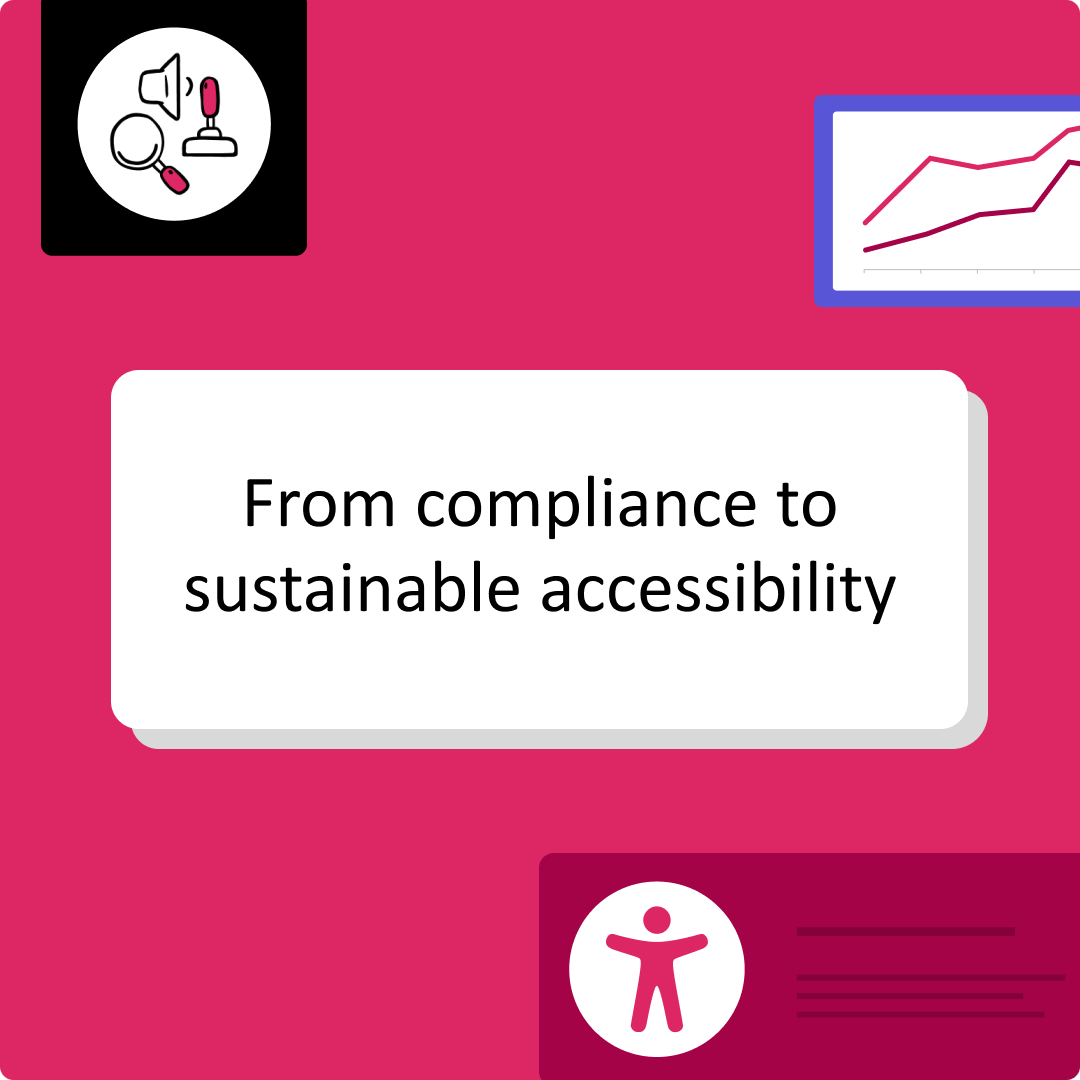
Crafting an effective accessibility statement for long-term success
Writing an accessibility statement is a meaningful step for any organization that aims to make its products and services accessible to everyone. It’s important to remember that accessibility efforts should be ongoing, thought of as a journey rather than a destination. This means accessibility statements will be living documents that should be expected to change over time.
When crafting an accessibility statement, it helps to think of its purpose as sharing information about your organization’s commitment and efforts to accessibility, rather than a document intended to “prove” anything. Accessibility statements can also serve as a practical resource for assistive technology users on how to access content and support effectively.
Under the European Accessibility Act, an accessibility statement may even be a requirement depending on the nature of your business and where you are located, making it a “must have” versus a “nice to have”. Even if this requirement does not apply to your organization, accessibility statements are a helpful tool to instill trust in your brand, accountability for your teams, and positive experiences for customers.
In this article, we’ll cover some of the key components that contribute to a thoughtful accessibility statement including:
- Commitment level
- Standards and/or guidelines followed
- Products and services included
- Internal process and efforts
- Feedback and support mechanisms
Level of commitment
First, start by clearly stating your organization’s commitment to making its services and content accessible to all users, including those with disabilities. How you approach this will set the tone for your entire statement that follows. If applicable, it’s helpful to use value-driven language that aligns accessibility to a core principle of the organization. Positioning accessibility and inclusion with a direct relation to an organization’s overall mission is an effective way to ensure accessibility is not perceived as an afterthought, or a checkbox exercise.
Relevant standards and guidelines
If you are striving to adhere to specific accessibility standards, regulations and/or guidelines, such as the Web Content Accessibility Guidelines (WCAG), you’ll want to share more about that. While compliance should not be your ultimate end-goal, it still provides important context to your organization’s approach and ongoing commitments. Remember, a compliant product does not necessarily mean a usable or enjoyable one.
Scope of products and services
Identify the areas being addressed for accessibility, such as websites, mobile apps, customer service, and physical environments. This helps customers understand an organization’s comprehensive approach to accessibility, and inform them of any known limitations or areas currently out of scope.
For example, Canada Post’s accessibility statement highlights multiple dimensions of accessibility efforts including online services, delivery services, and in-person services at retail locations. This lets customers know that at various points of their customer journey, not limited to online experiences, accessibility is prioritized and there is transparency about what accommodations are available.
Internal accessibility processes
Share more about how your teams are actively working towards your goals. This could include testing methodologies, training for employees, third-party vendors or partnerships, assistive technologies supported, and more.
Asana’s public commitment to accessibility highlights details of accessibility specific features in their product, how they incorporate accessibility throughout design and development, as well as a testimonial from an assistive technology user.
Feedback and support mechanisms
One of the most important parts of an accessibility statement is providing users with a way to contact your organization if they encounter issues or barriers. There should be multiple channels available, such as chat, email or phone. All formats should be easy to find and, of course, accessible. This includes any third-party services you may be using for things like chatbots or forms.
Consider providing additional resources like FAQs or product documentation so that users can support themselves independently if they prefer. Microsoft even has a dedicated support channel called the disability answer desk which provides product support specifically for customers with disabilities.
Continuous improvement and updates
Overall, an accessibility statement should be treated as a living document. It’s important to commit to reviewing and updating your statement as you continue your journey. This is particularly important because standards, assistive technologies, and your products all evolve over time. Thus, it’s important that your accessibility statement does too. Accessibility statements can also be a great place to highlight wins and celebrate successes along the way.




